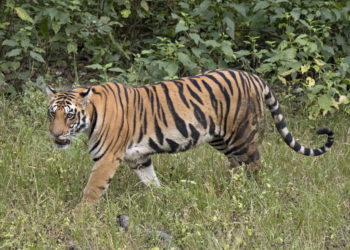When the entire face of the Moon is illuminated by the Sun’s rays and it is bright enough to light up the dark nights, it is called ‘full moon’ (or Purnima). The Moon does not emit its own light. It shines by reflecting sunlight. Depending on the relative positions of the Earth, Sun and Moon, varying amounts of the lunar surface appear to be illuminated. There is a full moon at every 29.5 days.
The Full Moon inspires celebrations all around the world in different forms. In South Asia, Purnima (Full Moon) is considered as spiritually important as it aids to the spiritual practices and other such disciplines. The Moon has also inspired the invention of countless deities based on its energy, like Som and Chandra in Vedic civilization and the Roman goddess Luna or her Norse male counterpart Máni.Other names of moon in Hindu mythology include Indu (bright drop), Atrisuta (son of Atri), Sachin (marked by hare) and Nishakara (the night maker) amongst others.
Research studies show that the moon frequencies are more active on full moon day and this has a connection with a heightened activity of the human mind. The heightened activity can range from increase in random thoughts to increased focus of mind activity of thoughts in specific direction.
Therefore, across the cultures around the world, the full moon has been associated with strange or insane behavior, including suicide, sleepwalking and violence.
Every month Earth’s moon goes through its phases, waning and waxing in its regular transformation from new moon to full moon and back again. The Earth is in a large gravitational field, influenced by both the Sun and Moon.
The tides are at their highest level at the time of full moon (and new moon) — when sun and moon are lined up with earth. As the moon pulls the tides in the oceans, it also pulls the subtle bodies of water from beneath the earth and increases the content of moisture in upper soils. Scientific tests have proven that seeds absorb maximum water contents during the time of full moon. This has resulted in a technique of ‘Moon phase agriculture (or gardening).









Comment